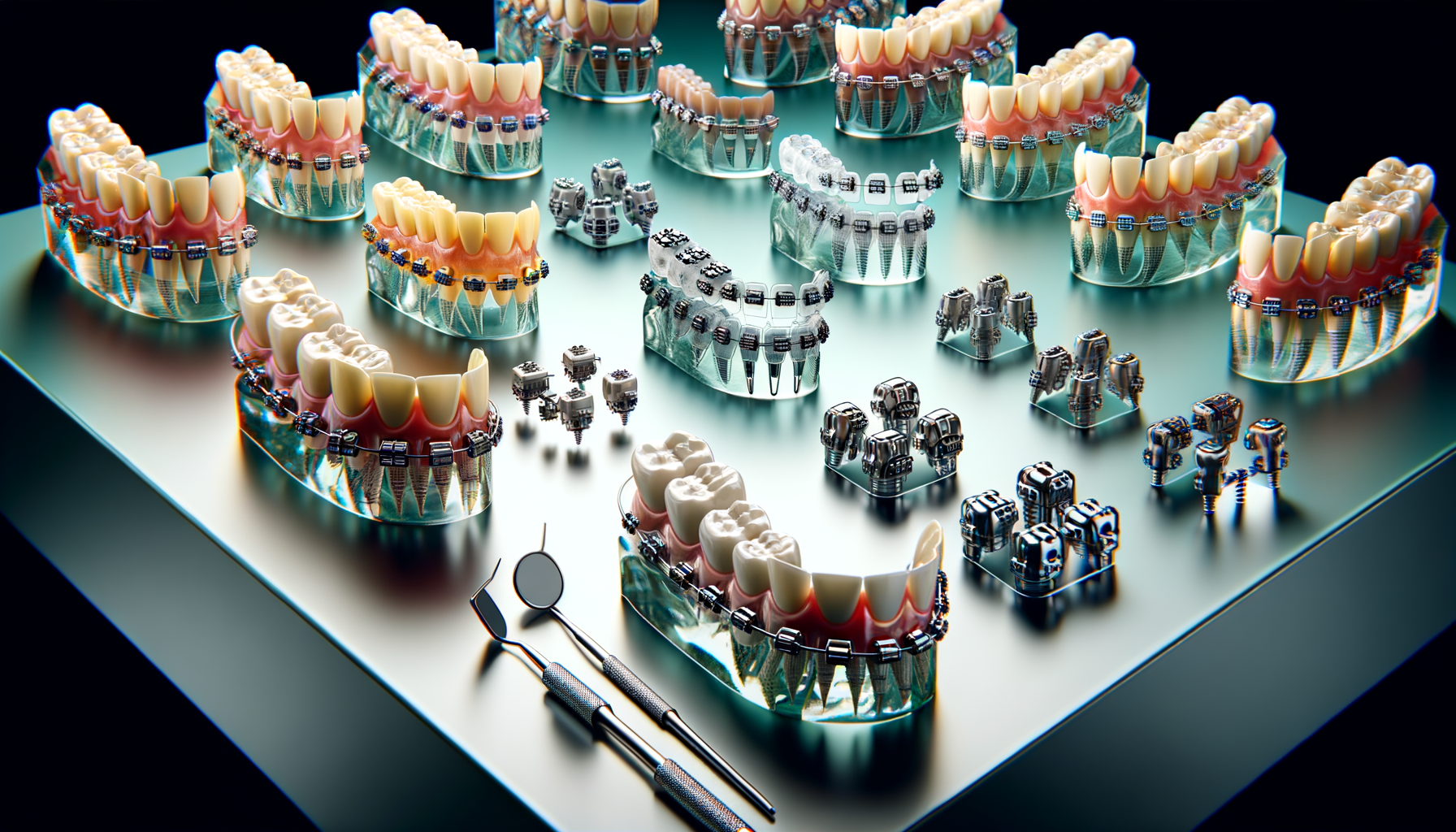
Explore Dental Braces Options Tailored to Every Age Group
Types of Dental Braces
When it comes to dental braces, the options are diverse, each offering unique benefits tailored to different needs. The most traditional type is metal braces, known for their durability and effectiveness in correcting a wide range of dental issues. These braces use metal brackets and wires, and while they are visible, they are often the go-to choice for complex cases.
Ceramic braces offer a more aesthetic alternative. They function similarly to metal braces but use clear or tooth-colored brackets that blend with the teeth, making them less noticeable. These are a popular choice for those who want a subtler appearance without compromising on functionality.
Lingual braces take discretion a step further by being placed on the inside of the teeth. This makes them invisible from the outside, although they can be more challenging to clean and may require a longer adjustment period.
Finally, clear aligners have gained popularity for their convenience and appearance. These removable trays are custom-made to fit snugly over the teeth and are nearly invisible. They are ideal for mild to moderate dental corrections and offer the benefit of being removable for eating and cleaning.
Braces for Kids
Choosing braces for children involves considering both their dental needs and their comfort. Early orthodontic intervention can guide the development of the jaw and permanent teeth, potentially reducing the need for more extensive treatment later on. For children, traditional metal braces are often recommended due to their robustness and effectiveness. They can correct a variety of issues, including overcrowding and misaligned bites.
It’s important to make the experience positive and engaging for kids. Many orthodontists offer colorful bands for metal braces, allowing children to express themselves and take an active role in their treatment. This can turn the experience into something they look forward to, rather than dread.
Parents should also consider the importance of dental hygiene. Metal braces require diligent cleaning to prevent plaque buildup and cavities. Teaching children the importance of brushing and flossing around their braces can instill good habits that last a lifetime.
Teenage Orthodontic Treatment
Teenagers often have unique orthodontic needs, balancing the desire for effective treatment with the importance of aesthetics. Traditional metal braces remain a popular choice due to their effectiveness, but many teens are drawn to less visible options. Ceramic braces and clear aligners are often considered for their subtle appearance.
Clear aligners, in particular, offer teenagers the flexibility they desire. They can be removed for important social events and sports, making them a convenient option for active teens. However, they require discipline, as they must be worn for the recommended 20-22 hours a day to be effective.
Orthodontic treatment during the teenage years can also address issues such as jaw alignment and bite correction, which are crucial for long-term dental health. Regular visits to the orthodontist ensure that the treatment progresses as planned and any adjustments are made promptly.
Adult Orthodontic Options
Adults seeking orthodontic treatment have more options than ever before, allowing them to correct dental issues without impacting their professional or personal life significantly. Clear aligners are a popular choice among adults due to their discreet appearance and convenience. They allow for easy maintenance of oral hygiene and do not interfere with eating or speaking.
Ceramic braces are another option for adults who require more extensive correction than clear aligners can provide. They offer the strength of traditional braces while being less noticeable. Lingual braces can also be considered for adults seeking a completely hidden option, although they may take some time to get used to.
It’s important for adults to understand that orthodontic treatment can take longer for them than for younger patients, as their bones are no longer growing. However, the results can significantly improve not only the appearance of their smile but also their overall oral health, reducing the risk of future dental problems.
Conclusion: Tailoring Treatment to Each Age Group
Choosing the right type of braces involves considering the specific needs and lifestyle of the individual, whether they are a child, teenager, or adult. Each age group has distinct requirements and preferences that can influence the choice of orthodontic treatment. By understanding the options available, individuals and their families can make informed decisions that lead to successful outcomes.
Consulting with an orthodontist is an essential step in this process, as they can provide expert advice tailored to the individual’s dental issues and personal preferences. With the right guidance, achieving a healthy, beautiful smile is within reach for everyone, regardless of age.